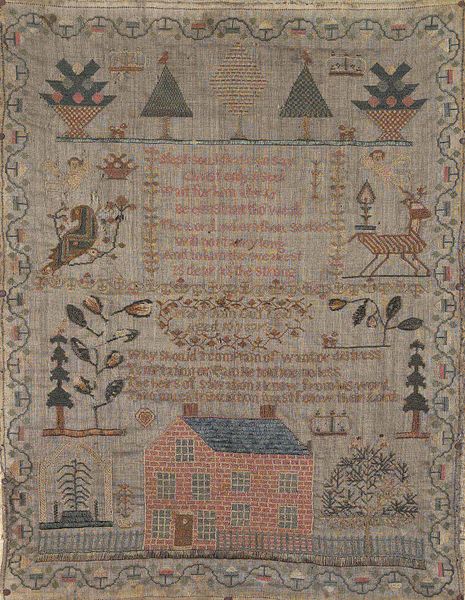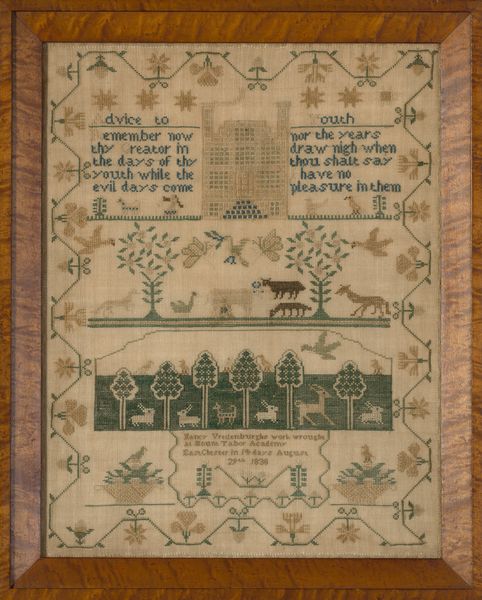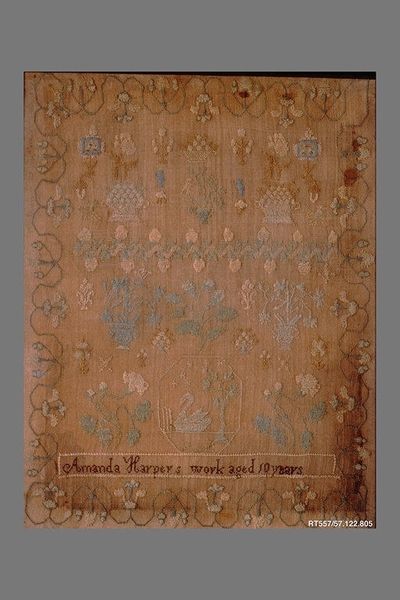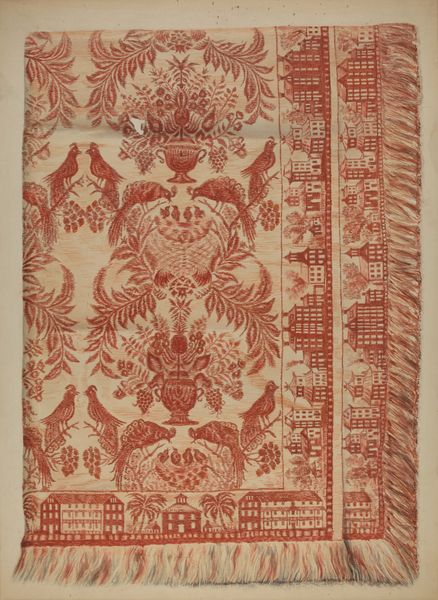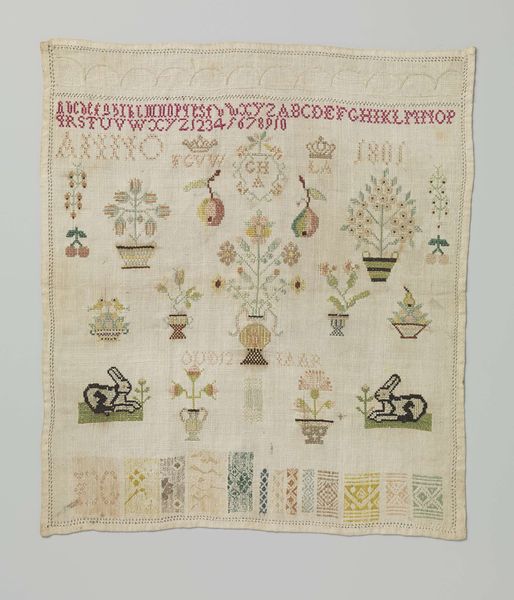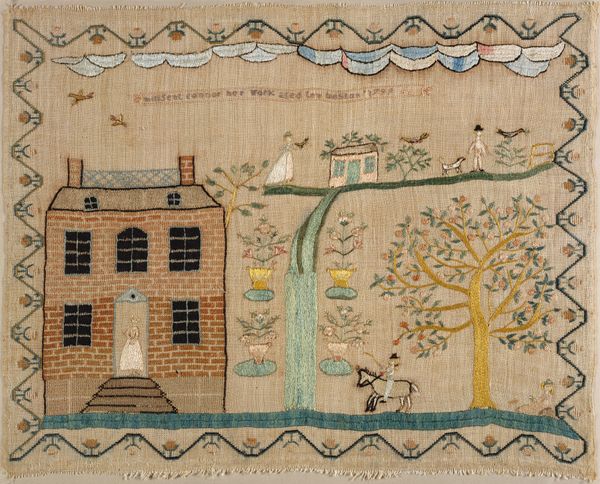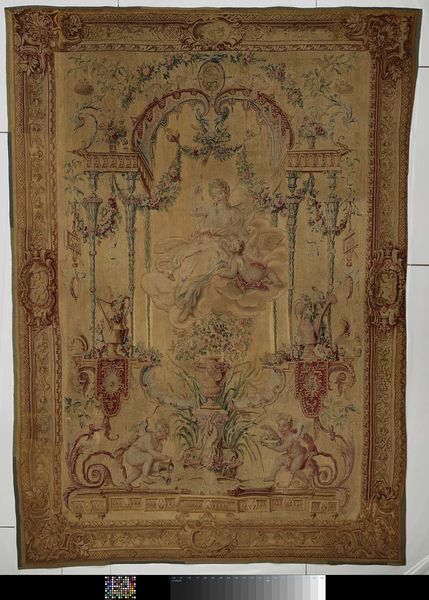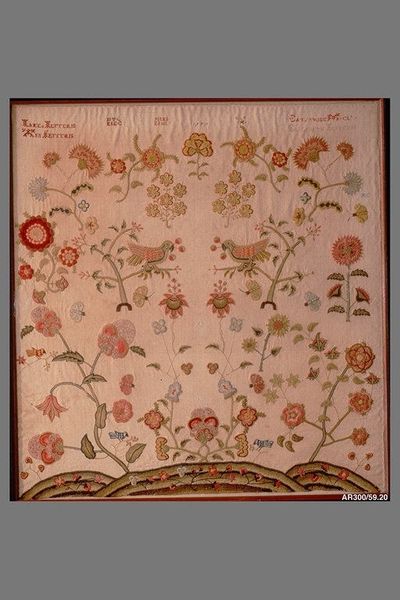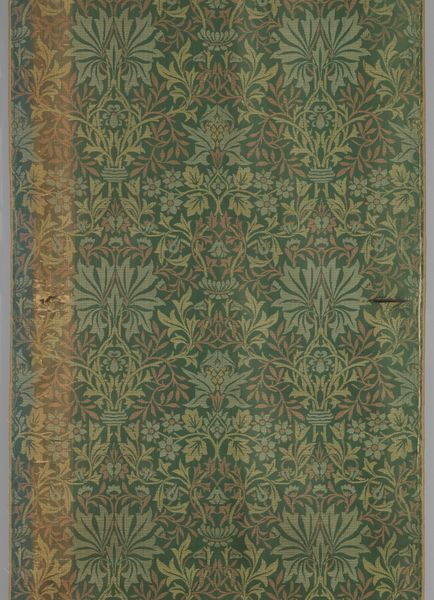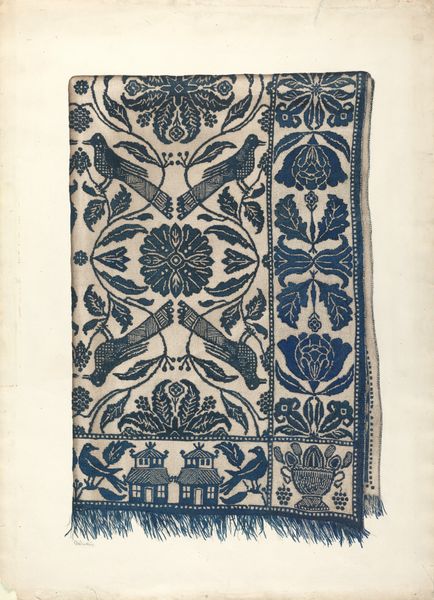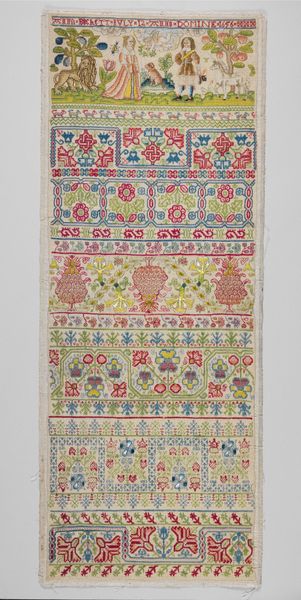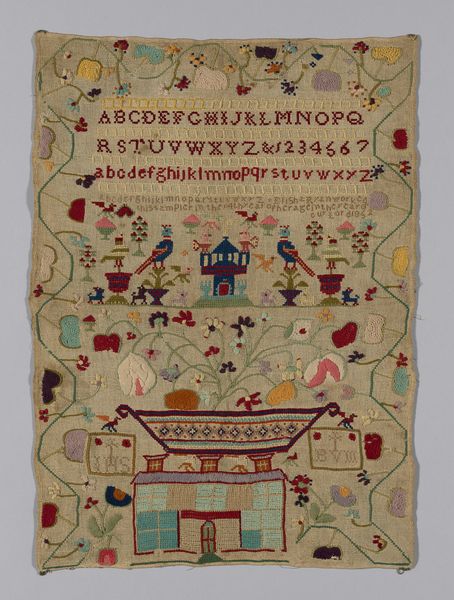
drawing, mixed-media, tempera, textile, cotton
#
drawing
#
mixed-media
#
muted colour palette
#
animal
#
tempera
#
landscape
#
textile
#
house
#
figuration
#
folk-art
#
romanticism
#
united-states
#
cotton
Dimensions: 21 1/2 x 17 in. (54.6 x 43.2 cm)
Copyright: Public Domain
Editor: This is Ann Margaret Thum’s embroidered sampler from 1819. It's done in mixed media, including cotton, and depicts a house, trees, and some animals within an elaborate floral border. I find the muted colors quite charming, but there's also a sense of fragility to it. How do you interpret this work? Curator: Beyond its charm, consider the context of its creation. Embroidery samplers were typically made by young girls in the 19th century as demonstrations of their needlework skills, crucial for their expected roles in domestic life. Editor: So it’s more than just a pretty picture? Curator: Exactly. It speaks volumes about the social expectations placed upon women, particularly regarding domesticity and craftsmanship. Look closely at the motifs – the house, the animals, the carefully cultivated garden. What do these elements tell us? Editor: They suggest an idealized version of domestic life? The house looks neat, the animals peaceful… It all feels very controlled and perhaps… aspirational. Curator: Precisely. But also, consider the act of creation itself. While ostensibly fulfilling societal expectations, was the creator able to use their art to explore other possibilities beyond domestic life? Can the use of Romantic-era landscape as the backdrop offer another form of self-expression? Do the textiles carry with them any additional political dimensions of the day, like, the raw materials perhaps being byproducts of enslaved labor in the US South at this time? Editor: I never thought about the act of creating art itself as a way of self-expression that pushes against society's restraints and explores one's identity in the face of these restraints! Curator: This piece reflects complex negotiation; simultaneously fulfilling, resisting, and reimagining predetermined roles for women in that society. It’s important to acknowledge its many dimensions and potential. Editor: I'll definitely look at samplers—and really all "domestic" arts—in a new light now. Thanks for a more complicated understanding. Curator: My pleasure. There’s always more to discover when we engage with art through an intersectional lens.
Comments
No comments
Be the first to comment and join the conversation on the ultimate creative platform.
